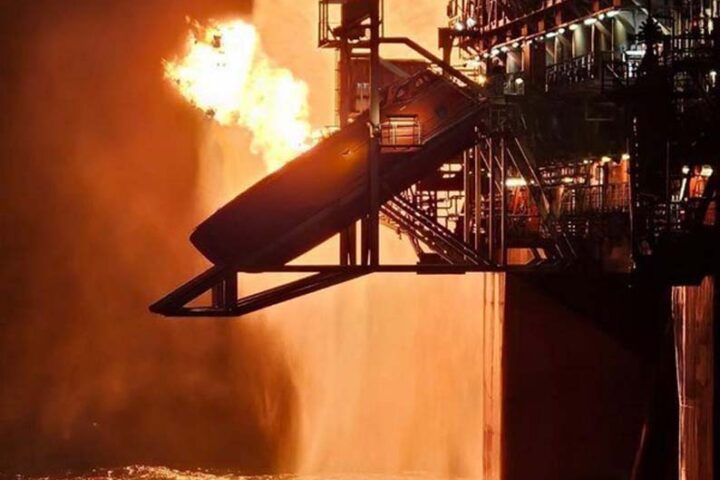.
Marcuard's Market update by GaveKal Dragonomics
There are two big facts about China today. One: its economy is slowing, and will almost certainly continue to do so for the next couple of years. Two: under its forceful president Xi Jinping, it is making a big push on many fronts to increase its influence around the world. The question is which of these facts deserves more attention.
 For those used to treating China as an economic growth story, the slowdown seems obviously more important. GDP is growing at its most sluggish rate since the late 1990s and is clearly headed lower. Leverage continues to rise; getting it under control will mean even slower growth. The heavy industrial sectors that have led the economy since the early 2000s are mired in excess capacity, and producer price deflation is entrenched. Clearly, the boom times are over, and much more pain lies ahead.
For those used to treating China as an economic growth story, the slowdown seems obviously more important. GDP is growing at its most sluggish rate since the late 1990s and is clearly headed lower. Leverage continues to rise; getting it under control will mean even slower growth. The heavy industrial sectors that have led the economy since the early 2000s are mired in excess capacity, and producer price deflation is entrenched. Clearly, the boom times are over, and much more pain lies ahead.
For workers in Chinese heavy industry, and for the countries that profited by selling commodities to China, this story is indeed bad news. For the rest of the world, China’s bid for greater global power is far more consequential.
As we have shown in much research over the past two years, China’s outward push has two major components. One is the “Belt and Road Initiative,” which aims to create Chinese-financed transport infrastructure links across Central Asia to Europe via a “Silk Road Economic Belt”, and across Southeast Asia to the Middle East and Africa via a “Maritime Silk Road.” The other is the promotion of the renminbi as a major global currency.
Both moves will have a larger impact over the next decade than can be calculated today. The Belt and Road programme could greatly enlarge the economic ecosystem within which China operates, creating investment and trade opportunities well beyond the initial infrastructure projects. It is a rival to the Trans-Pacific Partnership trade and investment agreement that the US hopes to complete — without China — later this year.
Western economists tend to assume that trade liberalisation produces more economic benefit than infrastructure, so their assessments of the Belt and Road have been mainly skeptical. Skepticism is fully warranted if we confine ourselves to narrow questions such as whether demand from Asian infrastructure projects can soak up the excess capacity in China’s steel industry (It can’t). Yet, good transport and communications infrastructure does the same thing that good trade agreements do: it lowers the cost of moving goods, people and ideas around. This boosts economic activity. It also turns smaller countries into clients of the central power that built it. China’s political goal is to exploit infrastructure to become the centre of a regional economy, just as the US exploited the power of trade to put itself at the centre of the global economy.
Renminbi internationalisation serves the same goals, and is also tied to domestic economic restructuring. If China can finance its trade and outward investments in its own currency, it can gain a taste of the “exorbitant privilege” that the US has long enjoyed. And since an international currency requires a more open financial system than China now has, the international renminbi policy provides an argument for domestic financial reform armoured with solid nationalist credentials.
Renminbi policy and financial reform help explain why China’s economic slowdown has been accompanied by an epic stock market run-up that shows no sign of flagging. Domestic investors know the days of easy money in property are over, and are moving their spare cash to the stock market. They feel safer doing so in the belief that capital account opening will bring in a flood of foreign money, and that financial reforms will eventually improve capital allocation, stabilising growth and pushing up equity prices.
Foreign portfolio investors, meanwhile, barely figure. Capital controls constrain their investments, and China’s weight in the MSCI All Country World Index is just 2.7%, less than Switzerland. Over the next several years, as capital controls erode, China’s index weight will rise toward Japan’s (7.7%), and foreign inflows will swell accordingly. Having a big, buoyant stock market is as much a part of Beijing’s master plan as the roads, ports and pipelines of the New Silk Road.
It is easy to be skeptical. Yet prophecies of doom for China’s idiosyncratic economy and authoritarian state have a dismal record. Last Thursday’s anniversary — 26 years since the bloody suppression of citizen demonstrations in Tiananmen Square — reminds us first of the enduring values gap between China and the capitalist democracies, but also of the Chinese system’s extraordinary resilience. Our bet is that this resilience will continue.
In the coming decade the world will have to reckon with China not as a fast-growing trading economy, but as a burgeoning geopolitical and financial power.







